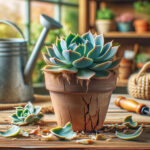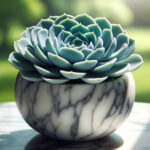Introducing Echeveria Gibbiflora: A Succulent Marvel
Delve into the world of Echeveria Gibbiflora, exploring its origins, characteristics, and why it stands out among succulent enthusiasts. This splendid specimen is the epitome of resilience and beauty, packaged into a compact rosette of lush, verdant leaves that capture the hearts of plant lovers globally.
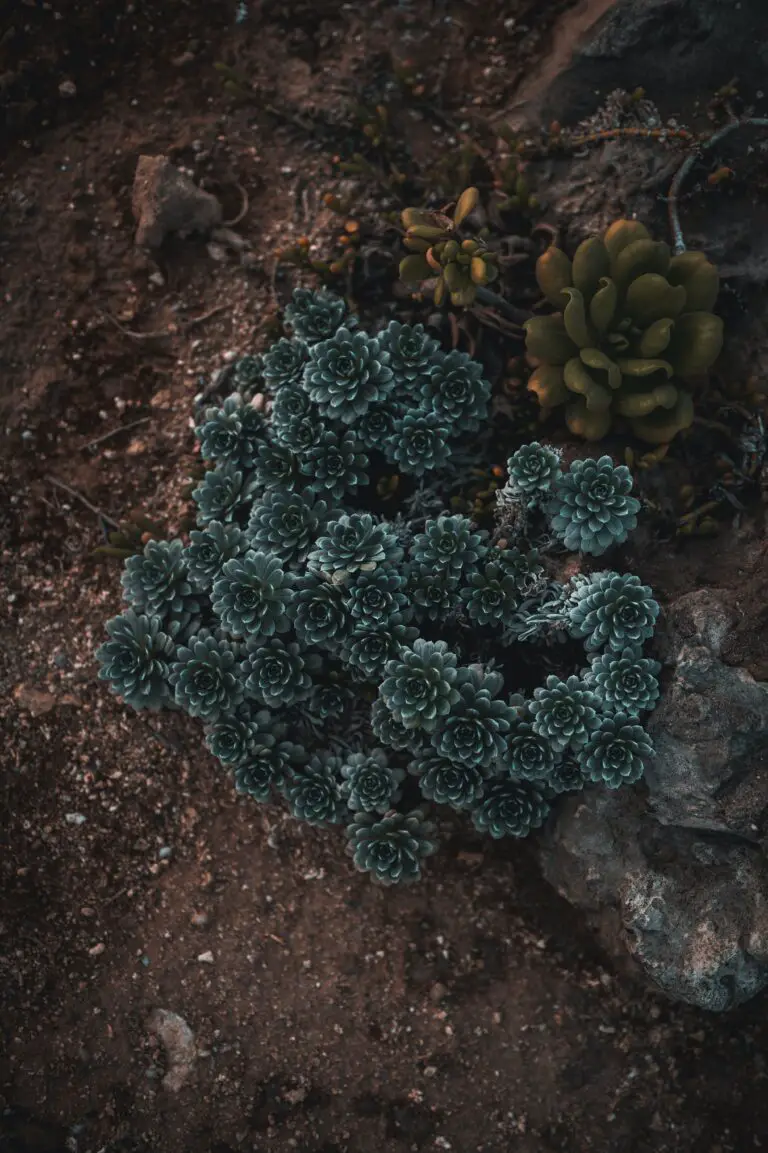
Native to the rocky outcrops of Mexico, Echeveria Gibbiflora seduces with its symmetrical form and kaleidoscopic color palette, ranging from deep greens to flamboyant pinks. Its enchanting presence is not solely for visual delight; it exemplifies nature’s ingenuity, thriving where few dare to settle. Gardeners and indoor plant collectors alike revel in the low maintenance and adaptable nature of this succulent charmer.
Imagining Echeveria Gibbiflora in your own living space isn’t just daydreaming—these plants fit perfectly on sunny windowsills or as the stars of rockery gardens, turning the ordinary into extraordinary. Their robustness makes them ideal candidates for those seeking green companionship without the fuss, with tales of flourishing Gibbiflora abounding in succulent communities and forums. In every rosette lies a story of survival and splendor, an echo of nature’s brilliance in our daily lives.”
The allure of the Echeveria Gibbiflora extends beyond aesthetics, for it is also a plant of significant versatility. Its adaptability to various environments is a testament to its evolutionary artistry. Whether as part of a creative succulent arrangement or growing solitarily in a terracotta pot, Echeveria Gibbiflora ensures that your foray into the realm of succulents is nothing short of remarkable.
Essential Echeveria Care: Ensuring Your Gibbiflora Thrives
Cultivating Echeveria Gibbiflora is like holding a gem. Each angle offers a new shade of charm, reflecting its health and vitality. It’s all about the details: the sunlight that grazes its plump leaves, the water that tickles its roots – every element matters. So let’s delve into the art of Echeveria care, where the fusion of science and soul keeps your succulent singing.
Sunlight Needs: Basking in the Perfect Glow
Imagine your Gibbiflora sunbathing on a Mediterranean coast, soaking up the golden rays. In the real world, this translates to placing your plant in a south-facing window or in a bright room with indirect sunlight. Don’t let it linger in the shadows; too little light and your succulent will stretch out, losing its compact form. But beware of the midday blaze – too much direct sun can scorch its delicate leaves.
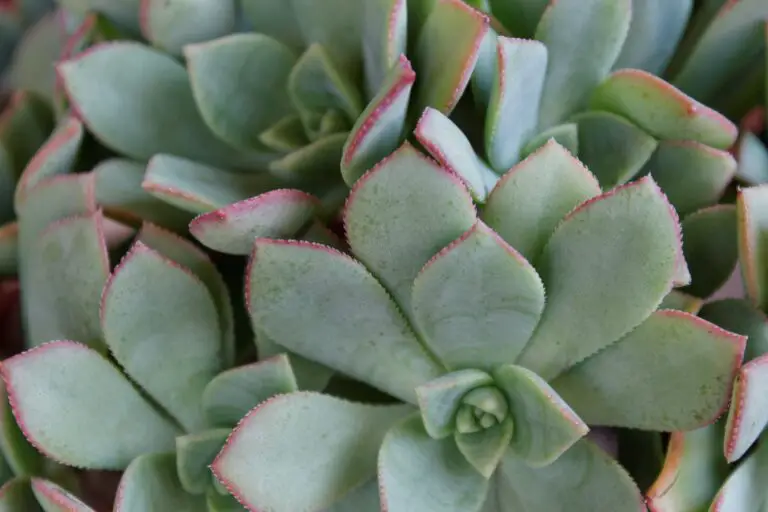
Watering Technique: The Art of Quenching Thirst
Watering an Echeveria Gibbiflora isn’t a mere routine; it’s a ritual. Wait for the soil to dry completely, then drench it until water runs through the drainage holes. Picture a desert downpour – sparse but substantial. Overwatering is the kiss of death for succulents, leading to rot. Let your plant’s roots breathe and drink at their own rhythm. It’s a delicate dance between too much and too little.
Perfect Temperature Range: The Sweet Spot of Comfort
Your Echeveria Gibbiflora doesn’t ask for much – just a cozy spot between 65°F to 80°F (18°C to 27°C). As resilient as it is, extreme cold is its nemesis. Shield it from frost – think of it as a warm blanket on a chilly night. In the heat of summer, however, Gibbiflora can handle a bit of a sizzle. Just keep it hydrated and happy, and you’ll have a friend for all seasons.
The secret to a thriving Echeveria Gibbiflora is balancing these essentials of care. Observe its reactions, adapt your approach, and allow this living sculpture to express its full glory. Moments of care are moments of connection – cherish them, and watch as your Gibbiflora grows into an exquisite work of art.
The Perfect Soil Mix for Your Echeveria Gibbiflora
When you think of a succulent that steals the spotlight, Echeveria Gibbiflora is the star performer. Crafting the perfect soil mix for it doesn’t have to be like mixing a magic potion—let’s keep it simple and effective. Imagine the splendid rosettes of Echeveria dancing happily in their pot; that’s the goal!
Now, this isn’t your everyday cactus cousin’s soil we’re talking about. Echeveria Gibbiflora craves something special—a well-draining, porous, and nutrient-balanced medium. Picture a sandy runway; that’s exactly what the delicate roots of your Echeveria should feel underfoot—aeration is key! Think one-part potting soil mixed with one-part coarse sand. Or, for those who get excited about a DIY project, combine equal parts of potting soil, perlite, and fine gravel for a mix that’s sure to get a round of applause from your plant.
Remember, water retention is the nemesis of Echeveria Gibbiflora. It’s like fitting it with a pair of concrete boots—definitely not conducive to a thriving succulent life. We wouldn’t want our plant pals sitting in dampness, would we? So, test your mix; if it retains water like a sponge, send it back to the mixology lab. The water should flow freely, akin to a gust wafting through the leaves, leaving the soil moist but not soggy.

Here’s a real-life trick: Celeste from “Succulents by the Sea” swears by adding a splash of activated charcoal to the soil concoction. It not only deters mold growth but also sings sweet serenades to the roots by improving soil health. Plus, it’s a tidbit your plant connoisseur friends might not know yet!
Lastly, this Echeveria is a rock star and it should sit on a pedestal—or at least on a top layer of fine gravel or pebbles. This decorative touch isn’t purely aesthetic; it prevents soil from splashing up onto the leaves during watering, which can lead to unsightly blemishes on your plant’s perfect complexion.
Ready to blend the ideal mix? Why not hone your skills with our ultimate guide to succulent soil and turn your Echeveria Gibbiflora into the showstopper we know it can be!
Real Quick Recap
- Go for porous and well-draining soil.
- Equal parts potting soil, coarse sand, perlite, and fine gravel make a winning mix.
- Activated charcoal is your secret weapon against mold and for overall soil health.
- A top dressing of fine gravel or pebbles will add finesse and function to your Echeveria’s abode.
Propagating Echeveria Gibbiflora: A Step-by-Step Guide
Have you ever gazed at a well-matured Echeveria Gibbiflora, with its rosette bouquets and thought, “How do I create more of these beauties?” You’re in luck! Propagation isn’t just a tactic reserved for horticulturists – with the right guidance, anyone can regale in the abundance of this exquisite succulent. Let’s dive into the art of propagation, one leaf and seed at a time.
Reproducing Royalty from Leaves
Starting with leaf propagation — the most accessible route for most succulent enthusiasts. Imagine twisting off a leaf, laying it on some soil, and watching the magic unfold. It’s quite the empowering experience! First, gently twist a healthy leaf from the stem, ensuring a clean ‘break.’ Lay it atop a well-draining succulent mix and give it some time. Mist it lightly every few days to encourage roots. Patience is key; within weeks, you’ll notice tiny roots stretching out, followed by a miniature Echeveria rosette forming at the leaf’s base. It’s like watching your favorite slow-motion nature documentary, but in real-life miniature!
Offsets: Nature’s Bonus Content
Now, let’s talk about offsets—tiny replicas of the mother plant that appear at its base. These little clones are like bonus content that nature provides, making propagation feel like a treasure hunt. When the offsets are a few inches across, cut them with a clean, sharp knife, leaving a small stem. Allow the cut to callous over for a few days, then plant them in their own containers. They’re already equipped with everything they need to thrive, so expect rapid growth and more of these enchanting succulents joining your garden party.
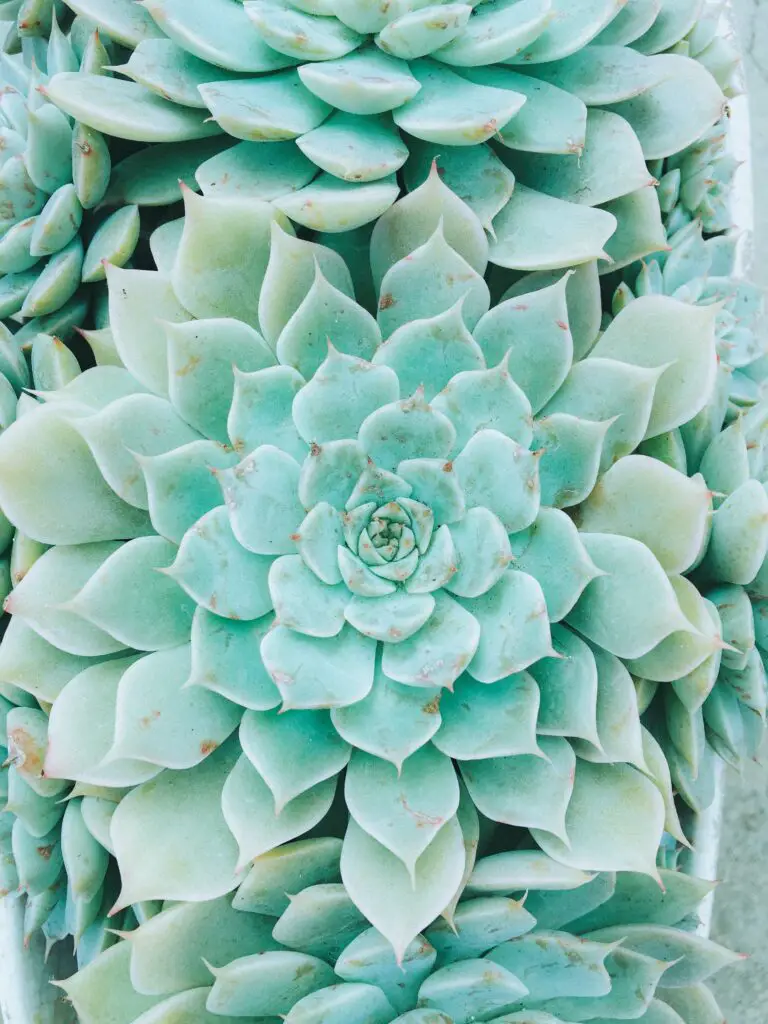
Growing New Generations from Seeds
Last but not least, we venture into the world of seed propagation. It’s a game of resilience, vision, and a tad bit of crossing your fingers. Start with a seed tray filled with a fine-grain substrate. Sprinkle the Echeveria Gibbiflora seeds and cover them with a fine dusting of soil or sand. The key is to maintain consistent moisture but avoid waterlogging. You might feel like you’re tending to the tiniest of gardens, and in reality, you are, preparing these seeds for their eventual debut.
While you’re nurturing your growing Echeveria family, don’t forget to check out our Ultimate Guide to Succulent Care. It’s your tour guide through the dynamic world of these hardy plants, ensuring that every propagated Echeveria Gibbiflora achieves its fullest potential under your care.
Propagating Echeveria Gibbiflora does more than just expand your plant collection; it immerses you into a cycle of life that’s as rewarding as it is enlightening. Each leaf, offset, or seed carries the promise of life, waiting to erupt into a splendid spectacle of succulent glory. So roll up those sleeves, get a bit of soil under those fingernails, and let’s propagate!
Design and Aesthetics: Incorporating Echeveria into Your Garden
Discover the charm of Echeveria gibbiflora, a succulent that’s as versatile as it is stunning. This succulent’s rosette formation, often highlighted with captivating color gradients, makes it a standout choice for any plant enthusiast looking to add a touch of elegance to their green space.
Strategic Placement for Optimal Growth
When planning your garden, consider the areas that receive the right balance of sunlight and shade to accommodate the Echeveria gibbiflora. While they adore the morning sun, a little afternoon shade will keep their colors vivid and prevent scorching. Nestling them in mixed containers or positioning them in rock gardens can amplify their natural beauty and ensure they receive proper care.
Garden Styles That Celebrate Echeveria
For the modern minimalist, a geometric garden bed filled with these succulents can serve as a living art installation. Envision a spectrum of echeverias creating a natural mosaic that evolves as they grow. Cottage gardeners can soften the edges of pathways with flowing echeveria borders, inviting visitors to admire these hardy yet delicate plants up close.
Indoor and Outdoor Echeveria Displays
Indoors, Echeveria gibbiflora thrives on sunny windowsills, in terrariums, or as part of a lush, green wall. Pair them with other succulents, or let them shine on their own in minimalist pots that complement their bold shapes and hues. Outdoors, create a succulent tapestry by interweaving various echeveria species in a rockery or alpine garden. The contrast of the soft rosettes against the rugged terrain is nothing short of mesmerizing.
Video Inspiration
Looking for a real-life example to spark your creativity? Check out this video where a little plant tower is ingeniously crafted, showcasing succulents, including the exquisite Echeveria gibbiflora, in a delightful garden setting:
Year-Round Appeal
Even when not in bloom, the Echeveria gibbiflora offers year-round appeal with its evergreen presence. Grouping these succulents with seasonal blooms or evergreen shrubs can create a dynamic display that evolves with the seasons, ensuring your garden remains a focal point regardless of the time of year.
Space-Saving Vertical Gardens
For gardeners with limited space, vertical gardens are a game-changer. Utilize vertical planters to grow Echeveria gibbiflora alongside a mix of succulents, creating a living wall of varied textures and shapes that can transform any small patio or balcony into a serene retreat.
With these imaginative ideas, you can effortlessly weave the captivating allure of Echeveria gibbiflora into the fabric of your garden, turning it into a sanctuary that reflects your personal style and passion for these extraordinary succulents.
Troubleshooting Common Issues: Pests and Diseases
Imagine coming home to your serene indoor garden, only to find your favorite Echeveria Gibbiflora starting to look a little under the weather. Don’t despair! It’s not uncommon for these sculptural beauties to catch the eye of some unwelcome guests or to fall prey to sneaky diseases. But you’ve got this – with a little know-how, you’ll be back to admiring your succulent’s vibrant rosettes in no time!
First, let’s tackle pests. These critters can be as stealthy as a cat burglar, and if you’re not vigilant, they’ll make a banquet out of your prized plant. Aphids, mealybugs, and spider mites are the usual suspects. They’re like the insect mafia of the plant world, setting up shop and extorting your plant’s vital juices. Here’s a snapshot of what those thirsty little vampires look like:

On to diseases – while Echeveria Gibbiflora are pretty robust, they’re not invincible. Watch out for signs of rot or fungal infections, often a soggy story written by overwatering or poor drainage. Prevention is key! Ensure your succulent’s soil is like a good mystery novel – well-draining and never waterlogged.
What can you do if you spot trouble? For pests, sending in the cavalry – also known as ladybugs or lacewings – can be top-notch biological warfare. Otherwise, a mild insecticidal soap is your go-to ally. However, remember, this isn’t a one-time battle; it’s a campaign. Regular check-ups are your surveillance strategy to catch any reoccurring pests.
As for diseases, channel your inner Sherlock Holmes and eliminate any excess moisture. If you find that part of the plant has gone too far into the fungal ‘dark side,’ don’t hesitate to trim the affected area. It’s like cutting off a corrupted space station in an intergalactic saga – sometimes it’s the only way to save the rest.
Ultimately, smart gardening is about being proactive. Keep an eye out for these covert operations, give your Echeveria Gibbiflora the care it deserves, and you’ll maintain the upper hand against pests and diseases. Remember, every plant tells a story – it’s up to you to ensure it’s one of triumph!
Seasonal Care for Echeveria Gibbiflora
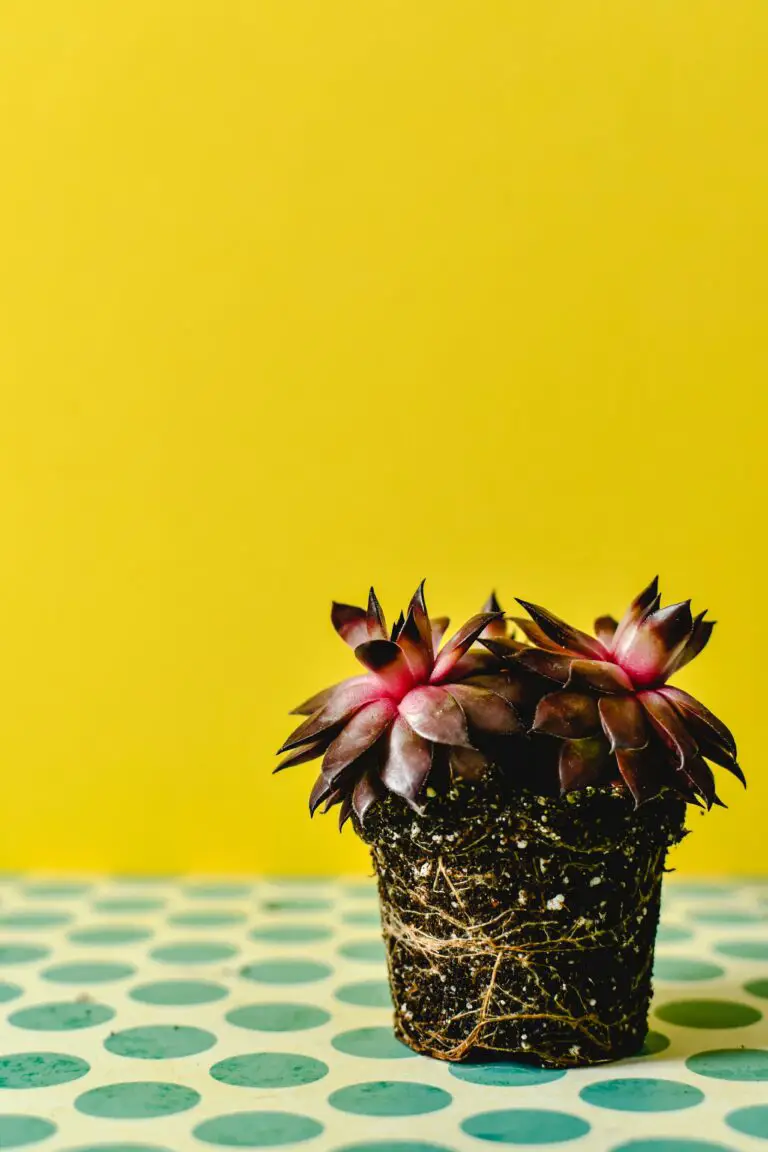
“Talk to me, Echeveria gibbiflora,” you might jest, pretending to understand its silent language. Surprisingly, your lovely succulent does communicate—through its vibrant leaves, firmness, and growth patterns. With each season’s turn, it whispers its needs, and with a few adjustments to your care routine, you can ensure it thrives all year round.
Spring Awakening
As winter’s chill recedes and the days lengthen, your Echeveria Gibbiflora emerges from its restful state. It’s the ideal time to ramp up watering schedules, allowing the soil to dry between sessions thoroughly. Transition the plant to a brighter spot where it can bask in the longer hours of sunlight, fueling its growth. Picture the succulent soaking in the soft morning rays, building energy for a season of lush expansion.
Sizzling Summer Care
Summer is when Echeveria Gibbiflora truly flourishes, but it’s also a season of watchfulness. Shield it from the midday sun’s intensity, as you would your skin at the beach. Think of watering like quenching a thirst after a long hike—deeply and efficiently, but not too frequently. During heatwaves, it’s akin to providing a refreshing, electrolyte-rich drink to prevent dehydration—the succulent’s fleshy leaves storing precious resources.
Autumn Adjustments
As the sun plays hide-and-seek in the autumn sky, it’s time for gradual changes. Begin to reduce watering as Echeveria Gibbiflora’s growth slows, akin to cooling down after a jog. The dropping temperatures signal preparation for the dormant period. Let’s help it acclimate by moving it away from drafty windows, much like donning a jacket on a brisk walk.
Winter’s Gentle Embrace
Winter invites a period of rest for your plant, mimicking the desert’s cool season. Water sparsely—the equivalent of sipping warm tea by the fire rather than a full glass of water. Allow the soil to stay dry for longer, and ensure the Echeveria Gibbiflora is snuggled away from frosty windows, in a spot that echoes the warmth of a desert’s winter sunbeam.
With these seasonal tips tucked in your gardening journal, you’re ready to escort your Echeveria Gibbiflora through the calendar, ensuring a dance of vigor and repose, a cycle of thriving that matches the rhythm of nature itself.
The Beauty of Blooms: Flowering and Aftercare of Gibbiflora
Imagine the stunning transformation as your Echeveria Gibbiflora prepares to showcase its floral display. It’s a moment that many succulent enthusiasts eagerly await. As the rosette of thick, fleshy leaves suddenly gives way to a tall bloom stalk, an array of colorful, bell-shaped flowers unfurl, mesmerizing anyone fortunate enough to witness this natural spectacle. Let’s dive into the captivating blooming process of this exquisite succulent and unwrap the secrets to its aftercare.
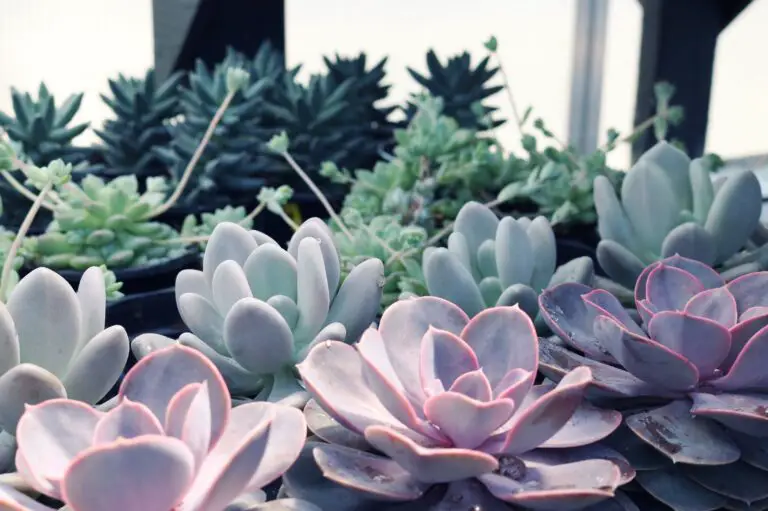
When it comes to Echeveria Gibbiflora, blooming typically occurs in the warmer months, indicating that the plant is thriving and has reached maturity. It’s like nature’s pat on the back, a sign that you’ve provided your succulent with the right environment to flourish. The onset of the flowering stage emerges like a story, where each chapter unfolds a new row of delicate petals, peering out to soak up the sun’s affection.
During flowering, it’s essential to maintain a close eye on your botanical buddy. This isn’t the time to take a vacation and forget about your plant’s needs! Ensuring adequate sunlight and water – though not too much, as this isn’t a thirsty cactus demanding a drink every day – is crucial. It’s all about balance. You see, in the wild, Echeverias, like Gibbiflora, are used to the tough love of nature, which means they appreciate a little neglect over pampering.
Once the colorful parade is over and the last flower has taken its final bow, post-bloom care is key to keep your Gibbiflora in superstar shape. This might mean pruning the spent flower stalk to encourage the plant to focus its energy back to the rosette. However, it’s not just about snipping off the old to make way for the new. This is the perfect time to check for any pups (offsets) that might be hiding under the mother plant’s skirt, ready to charm the world with their own succulent appeal.
Caring for an Echeveria Gibbiflora post-bloom also means reassessing its living quarters. Does the pot still fit? Is the soil too compacted from all the watering during the growing and flowering stages? Repotting might just be on the agenda. Remember, this isn’t about giving your plant a new home for the sake of aesthetics; it’s about ensuring continued health and vigor, allowing your succulent to breathe and stretch its roots comfortably in a fresh, well-draining mix.
By adopting the right aftercare techniques, you not only preserve the beauty of your Echeveria Gibbiflora but also bolster its resilience and set the stage for future blooming cycles. So, cherish every moment of the blooming phase and harness the insightful aftercare practices for an exquisite succulent that continues to captivate and inspire with each passing season.
Facts and Misconceptions about Echeveria Gibbiflora
Embarking on the echeverial journey, it’s essential to sift through myths and gather the blooms of truth about the dazzling Echeveria Gibbiflora. Often shrouded in mystery, this succulent is a topic of many gardening tales, some fact, others fiction. Let’s unearth the realities and dismiss the fables that hover around these rosette-forming treasures.
It’s often believed that Echeveria Gibbiflora demands the blazing sun all day long. While it’s true they relish the light, their preference is a ballet of sun and shade. Imagine a sun-kissed patio where morning light playfully dapples through an overhead lattice—this is the stage where Echeveria Gibbiflora performs best. Overexposure to the midday torch can scorch their delicate leaves, a truth sometimes learned the hard way by even the most devoted fans.
Watering Wonders and Woes
Then comes the tale of watering: a myth as persistent as drought. Whispered in hushed tones, many believe that Echeverias, such as Gibbiflora, survive on the mere memory of water. Let’s demystify this – while they are drought-tolerant, these succulents thrive when their soil is soaked through and then left to dry completely. Water them as though you’re preparing for a feast, then allow them a period of fasting. Repeat the cycle, and you’ll witness a flourishing spectacle.
Resilience vs. Delicacy
On the note of resilience, it’s rumored that Echeveria Gibbiflora is as tough as old boots. In reality, they do possess a certain rugged charm, but like the finest porcelain, they demand a gentle touch. They handle temperature fluctuations with grace, yet a snap of frost can bruise their spirit faster than one can say ‘succulent.’
The most astonishing fact, perhaps, is their secret ability to captivate wildlife. Far from the misconception that they are inert, Echeveria Gibbiflora acts as a beacon for pollinators. In the zenith of their bloom, they aren’t just a visual delight; their flowers are a symphony of nectar, inviting hummingbirds and bees to partake in their sweet offering.
Dive into the world of Echeveria Gibbiflora with inquisitive eyes and a discerning mind. Dispel the myths and what you’re left with is a succulent that is not only exquisite in its beauty but robust in its simplicity. Whether quietly perching on your windowsill or boldly accenting your garden tapestry, Echeveria Gibbiflora remains an enchanting enigma, just waiting to be understood.
Frequently Asked Questions
So you’ve got an Echeveria gibbiflora and you’re eager to learn the ins and outs of its care? You’re in the right place! Let’s delve into the most burning questions you might have as an Echeveria enthusiast.
What’s the Ideal Lighting for My Echeveria Gibbiflora?
Lighting is like a double-edged sword for Echeveria gibbiflora. Imagine a day at the beach: Your succulent loves a good sunbath but can get sunburn if left under the blazing midday sun. Aim for bright, indirect light, like the morning sun. It’s like slathering on sunscreen for your green buddy.
When Should I Water My Succulent?
Thirsty or drowned—an Echeveria gibbiflora‘s nightmare! The ‘soak and dry’ method is your go-to “rule of thumb”. Wait until the soil’s dry as a desert, then water like there’s no tomorrow. This method mimics the drought-and-downpour pattern they’d experience in their natural habitats.
Is It True That Echeveria Gibbiflora Can Survive Drought?
Survive? Yes. Thrive? Not so much. Think of them as camels of the plant world. They store water in those plump leaves for the dry spells, but too long without water, and they’ll start to look more like raisins than robust rosettes.
Why Are the Leaves on My Echeveria Turning Yellow?
Yellow leaves often scream “I’m overwatered!” Picture this: You’re enjoying a hearty meal but keep getting spoon-fed even when full. Not fun, right? Your succulent feels the same with water. Ensure good drainage and remember the ‘soak and dry’ approach to keep those leaves a vibrant green.
Can Frost Affect My Echeveria Gibbiflora?
Imagine one of those frigid winter days that chill you to the bone—a complete no-go for your succulent. Frost can cause damage faster than ice cream melts in the sun. If Jack Frost is knocking, it’s time to move your green friend indoors or provide some cozy protection.
How to Fertilize Echeveria Gibbiflora?
Feeding your Echeveria gibbiflora is like seasoning food—too little and it’s bland, too much and it’s ruined. A balanced half-strength fertilizer during the growing season will make your succulent as happy as a plant can be.
For a closer look at care tips, check out this detailed and engaging video:
Got another question popping up? Don’t worry; your Echeveria gibbiflora doesn’t come with a manual, but these snippets of wisdom should help you become an adept grower in no time!
